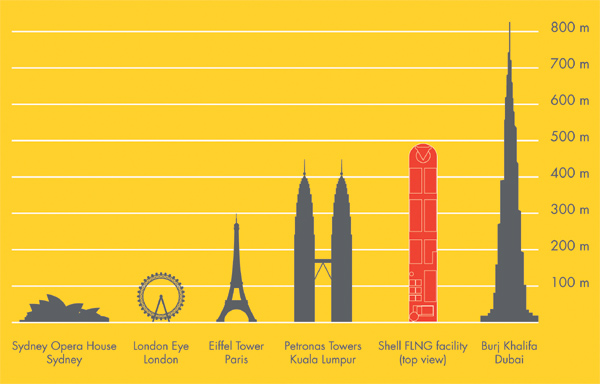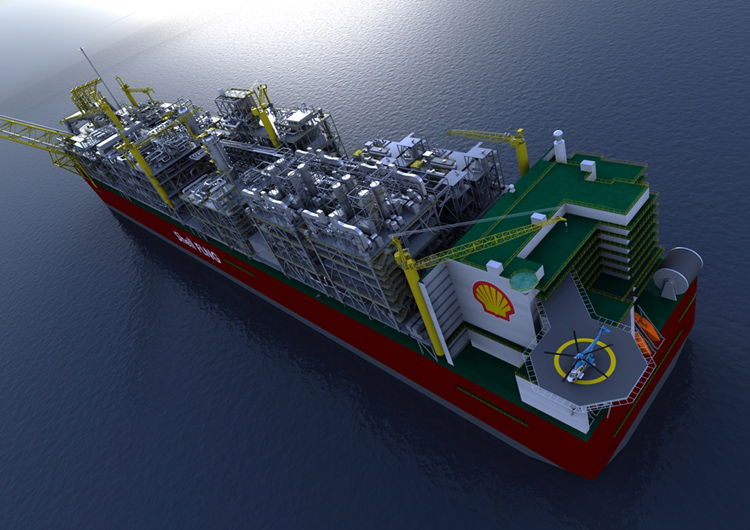Due to the remoteness of many deepwater natural gas resources, large-scale exploitation of these areas has been next to impossible. A new project, however, undertaken by Royal Dutch Shell, seeks to overcome these barriers. The Floating Liquefied Natural Gas (FLNG) platform, as it is called, begins operations this year off the coast of Northern Australia over Shell's Prelude natural gas field.
Essentially the world's largest "ship," the FLNG is anchored over several well heads in the isolated field, in water around 250 meters deep. It pumps up natural gas continuously, storing it within several massive tanks, chilled at -162°C which compresses its volume by 600 times. Every week, a gas tanker arrives to off-load the FLNG's stores. When fully loaded, the ship contains 600,000 tonnes of liquefied natural gas. It produces at least 5.3 million tonnes per annum (mtpa) of liquids: 3.6 mtpa of LNG, 1.3 mtpa of condensate and 0.4 mtpa of LPG. It is
488 metres long – equivalent to four soccer fields laid end to end.*
The facility is operated by a crew of 120 and costs around $10 billion to build. This mega-project capitalises on the growing demand and prices of natural gas, particularly in China. Most of the advantage of a floating gas platform has to do with the lack of permanent infrastructure. Not only is it easy to move when a field runs dry (as Prelude will do in 25 years), but it is more capable of dealing with the dangerous cyclones often present in the area.
The project does have some detractors however. Environmentalists have expressed concerns over the damage the FLNG could do to the ecosystem. Despite these issues, several more such platforms are constructed over the following decades.*


No comments:
Post a Comment